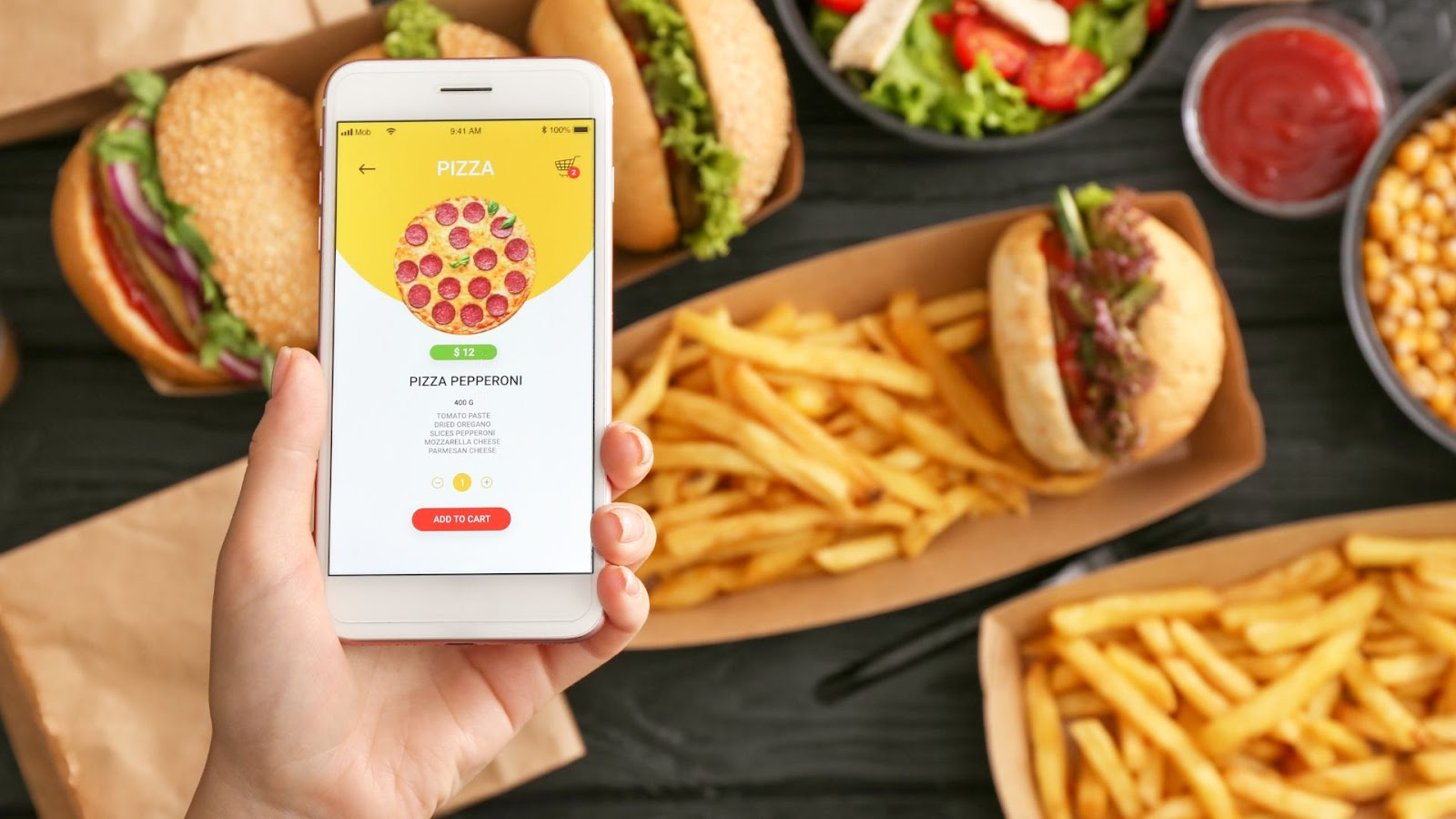October 8, 2025

Restaurants often face the pressure to balance delivery demand with razor-thin margins. Customers expect convenience, yet they remain highly sensitive to extra charges, making a delivery fee strategy more important than ever.
The question many owners ask is, how much should I charge for delivery fees without losing business or cutting into profits. This guide will help you set fees that reflect your costs, keep you competitive, and support long-term profitability.
Key Takeaways

Before setting a delivery fee, it’s essential to understand the full picture of costs that restaurants need to account for. Delivery is rarely just about gas money; it combines fixed expenses, variable charges, and additional fees that can quickly erode margins if overlooked.
Below are the major costs associated with food delivery fees:
Calculating a delivery fee means accounting for all these costs while still making sure your restaurant isn’t losing money on every order.
Setting the right delivery fee starts with a clear understanding of your costs and how they impact profitability. A step-by-step approach ensures that your fee covers expenses without driving away customers.
Step-by-Step Process:
1. Identify fixed costs: include equipment, packaging, insurance, and software fees.
2. Estimate variable costs: factor in driver wages, fuel, vehicle maintenance, and peak-time surcharges.
3. Add third-party commissions if applicable: consider the percentage charged by delivery apps.
4. Determine your margin: decide how much profit you want to make per delivery.
To illustrate, let’s consider a $20 food order for a typical 5 km delivery taking about 10 minutes.
Adding these together, the total cost ranges roughly from $5.38 to $6.38 per delivery. Based on this calculation, a reasonable and average food delivery fee would need to be added to this range to sufficiently ensure costs are covered while maintaining profitability for your restaurant.
Keep in mind these are hypothetical costs, and actual prices may vary.
If you handle deliveries in-house, you retain control of costs and margins, and the fee goes directly toward covering expenses. In contrast, using third-party apps like Uber Eats or DoorDash adds extra commissions that can shrink margins significantly. When partnering with such services, typically the food delivery fees should be relatively higher, so as to cover the commission cost, to maintain profitability.
But if you want a simple delivery service that doesn’t eat into your margins, consider iOrders. Our delivery-as-a-service lets restaurants handle deliveries through their own team or trusted third-party partners while avoiding commission costs with a fixed fee per order.

Selecting the right delivery fee model is crucial for restaurants aiming to balance profitability with customer satisfaction. Below are the most common structures, along with the advantages and disadvantages they bring to the table:
This is a fixed delivery charge per order, regardless of distance or order size.
What You Get with a Flat Fee?
What You Must Watch Out For:
With this model, delivery charges increase with the distance between the restaurant and the customer's location.
The Benefits of a Distance-Based Fee:
Possible Pitfalls:
With this model, delivery areas are divided into zones, each with a fixed fee.
Key Advantages of Zone-Based Pricing:
Limitations to Consider:
Here, the food delivery fee is a percentage of the total order value.
How It Helps Your Business:
Risks and Considerations:
This model combines elements from different models, such as a base flat fee plus additional charges based on distance or order value.
What Makes Them Effective:
What to Keep in Mind:
By carefully choosing and using the right delivery fee model, restaurants can set average delivery fees on food that keep customers satisfied, while also turning a profit on each order.

Setting delivery fees for a restaurant involves more than simple calculations. Certain factors influence how much customers are willing to pay and the profitability of your delivery operations.
Keep the following points in mind when you are setting your delivery fees:
Careful consideration of these factors enables restaurants to set food delivery fees that balance costs with standard industry expectations and support sustainable growth for their delivery operations.

Optimizing delivery profitability extends beyond setting a fee; it requires strategic operational approaches that control costs, increase revenue, and maintain customer satisfaction. Here are some tactics you can employ to make the most of your food delivery service:
1. Route Optimization and Order Batching: Planning delivery routes efficiently and grouping multiple orders together can significantly reduce fuel and driver costs. Using mapping software or delivery management tools helps minimize travel time and ensures faster service.
2. Restricting Delivery Radius: Limiting the delivery area helps maintain profitability by avoiding long trips that may cost more than the delivery fee. Establishing a reasonable radius ensures costs stay manageable and service quality remains high.
3. Upselling and Bundling: Offering family meals, combo deals, or add-ons encourages larger orders and spreads delivery costs across higher-value transactions. This approach not only boosts revenue but also improves perceived value for customers.
4. Using Loyalty Programs: Rewarding repeat customers with perks like free delivery after a certain number of orders can encourage loyalty while keeping delivery profitable. Effective loyalty programs, which you can implement with iOrders, can lead to higher average order values and increase repeat business.
5. Testing and Adjusting Fees: Regularly reviewing your delivery fees allows restaurants to respond to changing costs, seasonal demand, or competitor pricing. Experimenting with small adjustments helps identify optimal pricing that covers expenses without discouraging orders.
Implementing these strategies turns your food delivery fee into a tool that maximizes profitability and operational efficiency. By combining careful pricing with these smart operational practices, your restaurant business can maintain margins, deliver excellent service, and build long-term customer loyalty.

Finally, beyond setting profitable food delivery fees, it’s equally important to communicate them clearly to your customers. If they feel that the delivery fee is just too high for the sake of turning a profit, they might be hesitant to complete their order. After all, even the best pricing won’t help if your patrons bounce off at the checkout page.
Take a look at the best practices below for a smoother ordering experience for customers:
Clear communication of fees builds trust and reduces cart abandonment. To avoid this, you can:
Helping customers understand what they’re paying for increases satisfaction and reduces complaints. Try to:
The way you describe fees can influence customer perception and acceptance. You can try a few approaches, such as:
Effectively communicating delivery fees ensures that your restaurant keeps customers informed and satisfied, turning delivery charges from a point of friction into a clear and fair part of the ordering experience.
Setting profitable delivery fees is essential for restaurants to cover costs, maintain margins, and offer reliable service. Without a clear strategy, even high-quality food can lose value if delivery eats into profits or deters customers.
iOrders helps restaurants simplify this process while offering flexible payment options and commission-free delivery services. Restaurants can choose to use their own delivery staff, with iOrders acting as a tech layer to take orders, route them to the POS, and notify the team, ensuring a smooth and branded experience.
Alternatively, iOrders integrates with third-party delivery partners like DoorDash or Uber Direct, which provide logistics only without taking commissions. Restaurants pay a flat fee per delivery, and customers see only the restaurant’s branding, creating a consistent and professional experience.
Ready to simplify your restaurant’s delivery operations and boost profitability? Book a free demo with iOrders today!
1. How do I determine the right delivery fee for my restaurant?
Consider all costs, including driver wages, fuel, packaging, software fees, and third-party commissions, then select a fee model that balances profitability and customer expectations.
2. Should I use in-house delivery or third-party apps?
In-house delivery gives more control over costs and service, while third-party apps offer wider reach but charge commissions. Evaluate profitability and customer experience when deciding.
3. What delivery fee models work best for Canadian restaurants?
Flat fees, distance-based, zone-based, percentage-of-order, or hybrid models can work, depending on your location, order volume, and operational setup.
4. How can I communicate delivery fees to reduce order abandonment?
Be transparent at checkout, explain the value of the service, and use clear, customer-friendly wording to avoid confusion.
5. How often should I review or adjust my delivery fees?
Regularly assess costs, competitor pricing, demand fluctuations, and operational efficiency to update fees and maintain profitability.